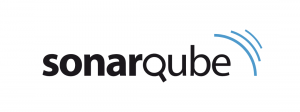Purpose:
Establishes organizational expectations for addressing the iterative cycle in which product or product component solutions are selected, designs are developed, and designs are implemented.
Objective:
Select, design, and implement solutions to requirements. Solutions, designs, and implementations encompass products, product components, and product-related lifecycle processes either singly or in combination as appropriate.
Description:
Technical Solution develops technical data packages for product components to be used by the Product Integration or Supplier Agreement Management process area. Alternative solutions are examined to select the optimum design based on established criteria. These criteria can be significantly different across products, depending on product type, operational environment, performance requirements, support requirements, and cost or delivery schedules. The task of selecting the final solution makes use of the specific practices in the Decision Analysis and Resolution process area.
Entrance Criteria:
- Design Specification Tools
- Simulators and Modeling Tools
- Prototyping Tools
- Scenario Definition and Management Tools
- Requirements Tracking Tools
- Interactive Documentation Tools
Exit Criteria:
- Product, Product Component, and Interface Designs
- Technical Data Packages
- Interface Design Documents
- Criteria for Design and Product Component Reuse
- Implemented Designs
- User, Installation, Operation, and Maintenance Documentation
Process and Procedures:
Tailoring Guidelines:
Organizations may choose to purchase a technical solution process and procedures rather than to develop them. Using the Causal Analysis and Resolution process, they can tailor the process to fit their organization.
Process Verification Record(s):
- Results of the Make, Buy, or Reuse Analysis
- Results of applying new methods and tools
- Alternative solution screening criteria
- Evaluation reports of new technologies
- Alternative solutions
- Selection criteria for final selection
- Evaluation reports of COTS or SaaS products
- Product component selection decisions and rationale
- Documented relationships between requirements and product
components - Documented solutions, evaluations, and rationale
Measure(s):
- Cost, schedule, and effort expended for rework
- Maintained By: <?>
- Submitted By: <?>
- Frequency of Submission: <?>
- Percentage of requirements addressed in the product or product component design
- Maintained By: <?>
- Submitted By: <?>
- Frequency of Submission: <?>
- Size and complexity of the product, product components, interfaces, and documentation
- Maintained By: <?>
- Submitted By: <?>
- Frequency of Submission: <?>
- Defect density of technical solutions work products
- Maintained By: <?>
- Submitted By: <?>
- Frequency of Submission: <?>
- Schedule for design activities
- Maintained By: <?>
- Submitted By: <?>
- Frequency of Submission: <?>
- Identify screening criteria to select a set of alternative solutions for consideration.
- Maintained By: <?>
- Submitted By: <?>
- Frequency of Submission: <?>
- Identify technologies currently in use and new product technologies for competitive advantage.
- Maintained By: <?>
- Submitted By: <?>
- Frequency of Submission: <?>
- Identify candidate COTS or SaaS products that satisfy the requirements.
- Maintained By: <?>
- Submitted By: <?>
- Frequency of Submission: <?>
- Identify re-usable solution components or applicable architecture patterns.
- Maintained By: <?>
- Submitted By: <?>
- Frequency of Submission: <?>
- Generate alternative solutions.
- Maintained By: <?>
- Submitted By: <?>
- Frequency of Submission: <?>
- Obtain a complete requirements allocation for each alternative.
- Maintained By: <?>
- Submitted By: <?>
- Frequency of Submission: <?>
- Develop the criteria for selecting the best alternative solution.
- Maintained By: <?>
- Submitted By: <?>
- Frequency of Submission: <?>
- Evaluate each alternative solution/set of solutions against the selection criteria established in the context of the operational concepts and scenarios.
- Maintained By: <?>
- Submitted By: <?>
- Frequency of Submission: <?>
- Based on the evaluation of alternatives, assess the adequacy of the selection criteria and update these criteria as necessary.
- Maintained By: <?>
- Submitted By: <?>
- Frequency of Submission: <?>
- Identify and resolve issues with the alternative solutions and requirements.
- Maintained By: <?>
- Submitted By: <?>
- Frequency of Submission: <?>
- Select the best set of alternative solutions that satisfy the established selection criteria.
- Maintained By: <?>
- Submitted By: <?>
- Frequency of Submission: <?>
- Establish the functional and quality attribute requirements associated with the selected set of alternatives as the set of allocated requirements to those product components.
- Maintained By: <?>
- Submitted By: <?>
- Frequency of Submission: <?>
- Identify the product component solutions that will be reused or acquired.
- Maintained By: <?>
- Submitted By: <?>
- Frequency of Submission: <?>
- Establish and maintain the documentation of the solutions, evaluations, and rationale.
- Maintained By: <?>
- Submitted By: <?>
- Frequency of Submission: <?>
References:
When your employees have questions, they want immediate answers. And when different needs arise during the workday, employees are motivated to learn at the moment.
In-the-flow learning delivers real-time education when your employees need it most and unleashes opportunities to:
- Identify skills that need to be developed
- Implement practical approaches to support learning
- Discover how to better support skills development
Here are the training modules for Technical Solution:
 This is a test
This is a test